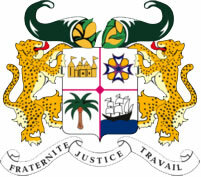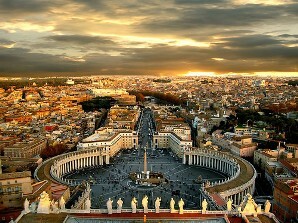Benin is a small country located in West Africa, its territory is bordered by the Gulf of Guinea and borders Burkina Faso, Niger, Nigeria and Togo. Benin was one of the largest slave depots between the 17th and 19th centuries. Many of them were brought to Brazil, introducing elements into Brazilian culture. Feijoada and acarajé are part of Beninese cuisine, and voodoo, a religious practice of the majority of the population, is similar to Candomblé.
Before becoming a French colony in 1892, Benin was the center of the Fon Dahomey reign, one of the most important in West Africa. The Royal Palace of Abomey, former seat of the monarchy, is considered a World Heritage Site by the United Nations Educational, Scientific and Cultural Organization (UNESCO).
In 1891, France occupied the territory of Benin, transforming it into the colony called Dahomey. Its independence was obtained on August 1, 1960, being named Republic of Dahomey, only in 1975, it adopted the current nomenclature.
The main economic activity developed in the country is subsistence agriculture, including the cultivation of corn, beans, rice, peanuts, cashews, pineapples and cassava. The country is an exporter of cotton and textile products.
The north of Beninese territory is the poorest region. In the South, fishing and agriculture sustain the economy. Benin is currently considered one of the poorest countries in the world.
Do not stop now... There's more after the advertising ;)

Benin Coat of Arms
Benin Data:
Territorial extension: 112,622 km².
Location: Africa.
Capital: Porto Novo.
Tropical weather.
Government: Presidential Republic.
Administrative division: 12 departments.
French Language.
Religion: Traditional beliefs 51.4%, Christianity 28% (Catholics 20.8%, others 7.2%), Islam 20%, no religion and atheism 0.3%, others 0.3%.
Population: 8,934,985 inhabitants. (Men: 4,509,112; Women: 4,425,873).
Ethnic composition: Fons 39%, Yoruba 12%, Goun 12%, Bariba 12%, Adjas 10%, Sombas 4%, Aizos 3%, Minas 2%, Dendis 2%, other 4%.
Demographic density: 75 inhabitants/km².
Average annual population growth rate: 3.22%.
Population residing in urban areas: 41.61%.
Population residing in rural areas: 58.39%.
Undernourished population: 19%.
Life expectancy at birth: 55.8 years.
Households with access to clean water: 65%.
Households with access to a health network: 30%.
Human Development Index (HDI): 0.435 (low).
Currency: CFA Franc.
Gross Domestic Product (GDP): US$5,579 million.
GDP per capita: US$ 618.
External relations: World Bank, IMF, WTO, UN, AU.
By Wagner de Cerqueira and Francisco
Graduated in Geography
Brazil School Team
countries - geography - Brazil School

